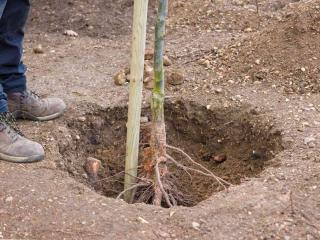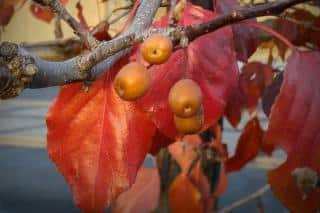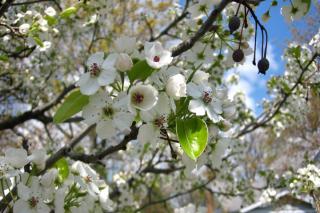

An ornamental pear tree is a tree that bears cute flowers at the beginning of spring.
Ornamental pear tree facts
Name – Pyrus species
Family – Rosaceae
Type – tree
Height – 16 to 32 feet (5 to 10 m)
Exposure – full sun, part sun
Soil: ordinary – Foliage: deciduous – Flowering: mid-spring
Fruits are fine for birds and animals, but not for us – what we find appealing is the blooming! Although it also produces small brown fruits, these have nothing in common with fruit pear trees and aren’t edible.


You can also cut wood out from the center to let the light through and remove dead wood.
As for most fruit trees, the blooming is most abundant when the tree is in full sun. Also, feel free to boost the nutrient count in the soil with fermented weed tea or rich compost. Fall and Spring are the two seasons where this is most effective.
There are actually two species in particular that are excellent “ornamental pear trees”.

They undergo bletting, meaning they stay hard and inedible even to birds until frost and freezing softens them up.
It produces cute little flowers at the very beginning of spring together with its beautiful silver-lined leaves. Its growth is quick. It only requires very little care and watering is only needed in small quantities in case of high temperatures, especially at the beginning. It’s native to the Middle-East, where it’s currently threatened. Planting one in your garden raises the chance of saving the species!
Bradford pear, with biological name Pyrus calleryana, is native to the Chinese hinterland. It has a complicated history in the United States. First it was highly recommended by authorities (primarily because it resists fireblight), and now it’s regarded as an invasive pear tree in many places.
Nonetheless, a famous cultivar is the ‘Capital’ Pyrus calleryana.
Light mulch will help retain a certain amount of moisture during the first years of growth.